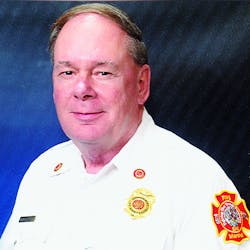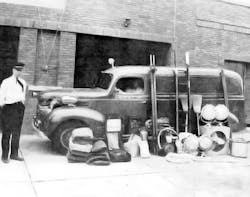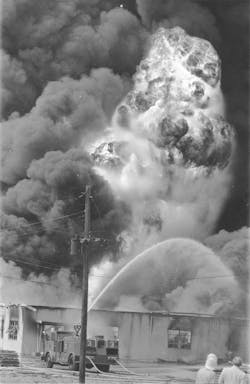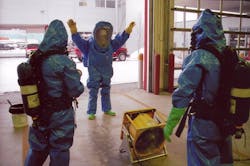Hazmatology: The Science of Hazardous Materials Part II
In the November 2017 issue of Firehouse Magazine, this column presented a new theoretical approach to hazardous materials—Hazmatology: The Science of Hazardous Materials. My thesis put forth a vision of what this might comprise. Rhetorical questions offered food for thought about a more scientific approach to hazardous materials planning and response.
Over the past two years, Hazmatology developed into a solid course of study. This column will provide an overview of some of the developed ideas and subject matter that are contained in the current version of Hazmatology. The column also will suggest some lessons learned during research and development of my concept of what Hazmatology: The Science of Hazardous Materials actually is.
Five general subject areas make up the curriculum for Hazmatology. They include: chronology of incidents and response; planning and standard of care; applied chemistry and physics; commonsense response; and hazmat team spotlight.
Chronology of incidents and response provides insight into past and current incidents and a history of the development of hazmat response in the U.S. emergency services.
Planning and standard of care provides a background on why organized hazardous materials response is necessary and how to plan for incidents.
Applied chemistry and physics provides insight as to how the concepts can be applied to incidents on the “street” in an easily understood and effective way.
Commonsense response follows a scientific approach to hazmat incidents that’s based on scientific knowledge, historical incidents, what other organizations use as an approach and a dose of common sense.
Hazmat team spotlight sheds light on teams from around the country, exposing equipment, procedures and training innovations and highlighting major incidents that they responded to and lessons learned from those incidents.Chronology of incidents and response
Before I began a research of historical hazmat incidents, I had some knowledge of those going back to the 1940s. Many of those incidents provide lessons for today’s responders. Keep in mind that many of those incidents occurred long before there were regulations and standards that we have today. The term “hazardous material” didn’t come along until the 1970s. Regulations and standards didn’t arrive until the 1980s. So, firefighters responded to what we would call hazardous materials today without any guidance for more than 140 years! Most of the time, they flew by the seat of their pants. They learned by trial and error. Many lost their life along with citizens.
During much of the time until the 1900s, there wasn’t radio, television or movies. Entertainment was limited, so when a big fire broke out, the community gathered to watch. This cost many of them their life when, unknown to the firefighters, explosives and other dangerous chemicals were involved in the fires.
Types of chemical exposures to firefighters were a result of the times, of the development of technology and of the needs of the public. The first incident that I could find evidence of that would be considered to involve a hazardous material occurred in Syracuse, NY, on Aug. 30, 1841—“The Great Gunpowder Explosion.”
During that time period, explosive materials were in general use and storage by the public. Anyone could purchase, store and use as much explosive material as wanted. There was no regulation on where the materials were stored or how the materials were used.
Fire broke out in Goings Carpenter Shop and spread rapidly. Crowds of people gathered to watch as volunteer firefighters arrived to battle the blaze. Unknown to any of them, a gunpowder consignment that totaled 650 lbs. in 25 kegs secretly was stored in the shop. Within moments of their arrival, as firefighters prepared to get water on the fire, a massive explosion occurred. It is estimated that at least 30 people were killed and at least 50 were injured. Records of this incident are scarce. However, based on the description of the tragedy, I am certain there must have been firemen killed in the explosion. (Note: In that time period and well into the 1950s, what we know as firefighters today were called firemen.) The Syracuse fire department wasn’t established until 1871, so they didn’t have any record of firemen’s deaths.
The primary hazard to firemen until about 1869 was explosives, including gunpowder, dynamite, fireworks, combustible dusts and nitroglycerine.
Oil was discovered in Pennsylvania in 1869, and this provided a new type of hazard to firefighters.
As technology developed, more and more hazardous materials were created. Today, the Chemical Abstract Service assigns numbers to all chemicals that are created hazardous and nonhazardous. There are 158 million unique organic and inorganic substances today, with about 15,000 identified per day. These aren’t all hazardous, but it gives you an idea of what we face today versus earlier in history.
From 1841 until the present day, hundreds of firefighters were killed and injured fighting fires that involved hazardous materials.
As I researched these incidents, one thing that I found missing was what I like to call “exotic” hazardous materials, which sometimes are referred to as “methyl, ethyl bad s#*@.” Somewhat to my surprise, firefighters are killed and injured by a very small variety of common hazardous materials. These include explosives, combustible dusts, anhydrous ammonia, chlorine, liquefied petroleum gases and various petroleum-based flammable liquids.Planning and standard of care
All response organizations across the country need to plan for hazardous materials incidents in their jurisdictions both large and small. Focus in each jurisdiction must involve those chemicals that they most likely will encounter. Those that are in the community will be the easiest to identify. Information also must be developed about those materials that are shipped through the community by whatever transportation routes are present. Hazmatology addresses the local, state and federal planning resources. Regulations and standards apply to both planning and response. These include the Occupational Health and Safety Administration (OSHA), the Environmental Protection Agency, Department of Transportation, FEMA and others. Knowing how these agency regulations and resources affect emergency response and planning is critical to the planning process.
Along with the regulations and standards comes an implied “standard of care.” A standard of care is the level of competence that’s anticipated or mandated during the performance of a service or duty. A standard of care isn’t static; it constantly changes, influenced by laws, regulations, consensus standards, knowledge and experience.
Hazmat response personnel have limitations on functions that they can perform at an incident. Limitations are based on level of knowledge, experience, training, and the availability of PPE and supplies. Not every jurisdiction has the capability to handle all types of hazardous materials. Because of the many types of emergencies that we are called upon to mitigate and of the limitations in funding, we must prioritize based on the types of emergencies that we typically face. For most departments, EMS is the number one type of response.
Applied chemistry and physics
Chemistry and physics aren’t something that most firefighters are familiar with or even want to be familiar with. Chemistry courses usually deal with concepts and teach you how chemicals are made and how to become a chemist. As hazmat responders, we don’t need to know how chemicals are made nor do we need to be chemists. What we do need to know is how to identify hazardous materials in the field and what hazards that they present when they escape their containers.
The approach of applied chemistry and physics in Hazmatology is more of a “street chemistry and physics”: How can we use this information when we arrive on scene of a hazmat incident? We look at chemical families and the general hazards of these families. Responders must know about physical and chemical characteristics of hazardous materials. Because of the dangers of common hazardous materials, Hazmatology focuses on these materials in depth. When other chemicals are identified in your communities, you must become familiar with them, too.Commonsense response
Standards and regulations are meant to apply to all emergency responders regardless of their local circumstances. Hazmatology takes a more commonsense approach.
The vast majority of firefighter deaths and injuries that involved hazardous materials occurred outside of urban areas. These historically are areas that have fewer resources and less training than urban areas have. The smaller the jurisdiction, the fewer the resources and the less training. National standards and regulations require training on railroad, highway, pipeline and water hazmat incidents. Why do you need railroad, pipeline and water training if your jurisdiction doesn’t have a railroad, pipeline or waterway? Common sense says that you don’t. In some cases, a community might not even have a major highway. My interpretation of OSHA regulations is they basically require you to be trained and equipped to do the job that you are asked to do.
We conduct decontamination of responders, equipment and the public that is contaminated with a hazardous material. If no one is contaminated, decontamination isn’t required. When dealing with a gas, little if any contamination occurs to people or equipment. “One type of decontamination” or “always conduct decontamination” doesn’t fit all situations. You must be flexible and conform to the situation that you face. Once again, use common sense. In a liquid spill or leak, if your personnel don’t come in contact with the pooled or leaking material, they aren’t contaminated. They don’t need decontamination.
There are many options today in the type of decontamination that’s available as a resource. Hazmatology teaches the types of decontamination and circumstances when they are used. It also teaches when decontamination isn’t necessary. Additionally, it teaches about many of the other hazards and options that are available to responders in their “hazmat toolbox.” Responders must look at all of their operations and determine what really is needed and what isn’t needed in their toolbox based on their local situation.
In my travels to hazmat teams across the United States and Canada, I witnessed many things that are the same and some that are different.
Most departments carry chlorine kits. Most that I talked to never used them. The incidence of major chlorine incidents is rare. Smaller leaks occur but not on a regular basis.
Teams have mass decontamination trailers, trucks and tents. Those, too, sometimes rarely are used or needed. Much of the mass decontamination came from the fears of military nerve and mustard agents in the 1990s. Those releases never occurred.
Remember, the biggest killers of firefighters are the common materials. Mass decontamination can be accomplished with the equipment that you already have to fight fires; it just takes planning and training with some minor modification when needed.
Take a look at your physical—and mental—hazmat toolbox; make sure that you have the tools to handle the hazardous materials that you most likely will encounter. Things that you might need if the unexpected occurs can be obtained from another source. Part of the planning process should include determining where to get resources that you don’t have in an emergency. If you are prepared to deal with the common materials that we have in our communities, you should be able to deal with the uncommon, using most of the same equipment and procedures. When I talked with hazmat teams that had large-scale, once-in-a-lifetime or career incidents, they all said the same thing: They couldn’t have predicted, planned or trained for the incident because of the unexpected scope. When faced with those, you do the best that you can and call for help.
Hazmat team spotlight
Visits to hazmat teams both large and small are very interesting. Almost every team has something in their physical hazmat toolbox that was new to me. One of the purposes of Hazmatology is to share information with other hazmat teams, team members or both, so they can determine whether it’s useful to them.
Some teams requested that I visit. Other teams were picked because of a major incident that they experienced. Teams also were selected geographically, so I could gather information on the differences of large, medium and small departments, both urban and rural. Each spotlight features department information as well as hazmat team information that includes why they were formed in the beginning. Also provided is hazmat training, exposure information about the jurisdiction, and examples of recent and historic incidents.
A way forward
Hazmatology is an evolving science. Much is to be discovered and developed. We should strive to determine why we do things the way that we do and whether there is an easier or safer way to do them. When I ask such questions, sometimes the response is, “That’s the way we always did it.” Hopefully, through Hazmatology, we find a common approach to hazmat response based on science and experience to protect responders and the public.
About the Author
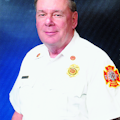
Robert Burke
Robert Burke, who is a hazardous materials and fire protection consultant and who served as a Firehouse contributing editor, is a Certified Fire Protection Specialist (CFSP), Fire Inspector II, Fire Inspector III, Fire Investigator and Hazardous Materials Specialist. He has served on state and county hazmat teams. Burke is the author of the textbooks "Hazardous Materials Chemistry for Emergency Responders," "Counter-Terrorism for Emergency Responders," "Fire Protection: Systems and Response," "Hazmat Teams Across America" and "Hazmatology: The Science of Hazardous Materials."
